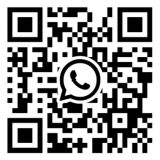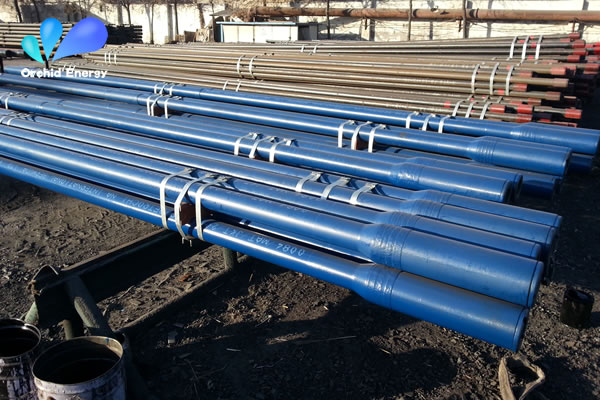-
ꁸ Top
-
ꂅ +86 159 1059 4147
-
ꀥ WhatsApp



-
HOME
-
ABOUT
-
PRODUCTS
- DRILLING TOOLS
- DRILLING MOTORS
- STABILIZERS
- DRILL COLLARS
- DRILLING JARS
- HYDRAULIC AGITATOR
- ANTI STICK-SLIP TOOL
- MULTIPLE ACTIVATION BYPASS VALVE
- DRILL PIPES
- NON-ROTATING PROTECTOR
- X-OVER & SUBS
- DRILL BITS
- MICRO REAMER
- FISHING TOOLS
- RELEASING SPEAR
- RELEASING AND CIRCULATING OVERSHOT
- REVERSE CIRCULATION JUNK BASKET
- JUNK SUB
- FISHING MAGNET
- SAFETY JOINT
- TAPER TAP
- DIE COLLAR
- IMPRESSION BLOCK
- DITCH MAGNET
- MILLING SHOES
- WASHOVER PIPE
- IBOPs
- KELLY VALVE
- FLOAT VALVE
- FULL OPENING SAFETY VALVE
- TOP DRIVE IBOP
- INSIDE BOP
- DROP-IN CHECK VALVE
- WELLBORE CLEANING TOOLS
- CASING SCRAPER
- NON-ROTARY CASING SCRAPER
- CASING BRUSH
- CUTTING BED IMPELLER
- STRING MAGNET
- ROTARY CASING GUIDER
- CASING CUTTER
- SECTION MILL
- WELLHEAD TOOLS
- ELEVATORS
- ELEVATOR LINKS
- POWER TONGS
- MANUAL TONGS
- SLIPS
- SPIDERS
- SPINNING WRENCH
- BUSHINGS
- DRILLING EQUIPMENTS
- MUD PUMP
- VALVE SEAT AND BODY
- PISTON
- CYLINDER LINER
- HYDRAULIC BUCKING UNIT
- JAR TESTER
- FRAC PUMP VALVE RUBBER
- FRAC PUMP VALVE BODY
- FRAC PUMP VALVE SEAT
- FRAC PUMP PLUNGER PACKING
-
PRESS
-
CONTACT


-
HOME
-
ABOUT
-
PRODUCTS
- DRILLING TOOLS
- DRILLING MOTORS
- STABILIZERS
- DRILL COLLARS
- DRILLING JARS
- HYDRAULIC AGITATOR
- ANTI STICK-SLIP TOOL
- MULTIPLE ACTIVATION BYPASS VALVE
- DRILL PIPES
- NON-ROTATING PROTECTOR
- X-OVER & SUBS
- DRILL BITS
- MICRO REAMER
- FISHING TOOLS
- RELEASING SPEAR
- RELEASING AND CIRCULATING OVERSHOT
- REVERSE CIRCULATION JUNK BASKET
- JUNK SUB
- FISHING MAGNET
- SAFETY JOINT
- TAPER TAP
- DIE COLLAR
- IMPRESSION BLOCK
- DITCH MAGNET
- MILLING SHOES
- WASHOVER PIPE
- IBOPs
- KELLY VALVE
- FLOAT VALVE
- FULL OPENING SAFETY VALVE
- TOP DRIVE IBOP
- INSIDE BOP
- DROP-IN CHECK VALVE
- WELLBORE CLEANING TOOLS
- CASING SCRAPER
- NON-ROTARY CASING SCRAPER
- CASING BRUSH
- CUTTING BED IMPELLER
- STRING MAGNET
- ROTARY CASING GUIDER
- CASING CUTTER
- SECTION MILL
- WELLHEAD TOOLS
- ELEVATORS
- ELEVATOR LINKS
- POWER TONGS
- MANUAL TONGS
- SLIPS
- SPIDERS
- SPINNING WRENCH
- BUSHINGS
- DRILLING EQUIPMENTS
- MUD PUMP
- VALVE SEAT AND BODY
- PISTON
- CYLINDER LINER
- HYDRAULIC BUCKING UNIT
- JAR TESTER
- FRAC PUMP VALVE RUBBER
- FRAC PUMP VALVE BODY
- FRAC PUMP VALVE SEAT
- FRAC PUMP PLUNGER PACKING
-
PRESS
-
CONTACT
Understanding Drill Pipe and Drill Collar: Key Components of Efficient Drilling Operations
Introduction:
Drilling operations in the oil and gas industry rely on the expertise of various components to achieve successful outcomes. Two essential components in the drill string are the drill pipe and drill collar. In this blog, we will delve into the functions, construction, and key features of drill pipe and drill collar, shedding light on their crucial roles in efficient drilling operations.

1. Drill Pipe:
Drill pipe is a hollow, steel tube that forms a significant part of the drill string. It connects the drilling rig to the drill bit and is responsible for transmitting power, rotation, and drilling fluids. Here are the key aspects of drill pipe:
- Composition and Construction:
Drill pipe is typically made of high-strength alloy steel, chosen for its durability and resistance to harsh drilling conditions. Each section of drill pipe is threaded on both ends to ensure seamless connections. The walls of the pipe are thick enough to withstand the forces encountered during drilling.
- Functions:
Drill pipe serves multiple important functions in drilling operations, including:
- Transferring drilling torque from the rig to the drill bit.
- Facilitating the circulation of drilling fluids to cool the bit and remove cuttings.
- Providing a conduit for wireline tools, allowing data transmission and measurements while drilling.
- Supporting the weight of the drill string, maintaining tension and preventing buckling.
2. Drill Collar:
The drill collar is a heavy, solid tubular component that is placed between the drill pipe and the drill bit in the drill string. It plays a crucial role in providing additional weight and stability to the drilling process. Consider the following aspects of drill collars:
- Composition and Construction:
Drill collars are made of solid bars of alloy steel, chosen for their density and strength. These bars are heat-treated to enhance their mechanical properties and resistance to fatigue. The drill collar's outer surface is often spiraled with grooves to increase its contact area with the surrounding formation.
- Functions:
Drill collars offer several important functions during drilling operations, including:
- Adding weight and downward force to aid the drill bit's penetration into the formation.
- Reducing drill string vibrations and ensuring a steady drilling process.
- Providing stability to the drill string by minimizing deviations or bending.
- Increasing the overall stiffness of the drill string, enhancing drilling accuracy.

Conclusion:
Both drill pipe and drill collars are vital components of the drill string, each playing a distinct role in achieving efficient drilling operations. While the drill pipe acts as a conduit for transmitting power and fluids, the drill collar adds weight, stability, and rigidity to the drill string. Understanding the functions and construction of these components is essential for optimizing drilling performance, ensuring safer and more productive operations in the oil and gas industry.
Click the link to know more about our <drill pipe> and <drill collar>.





